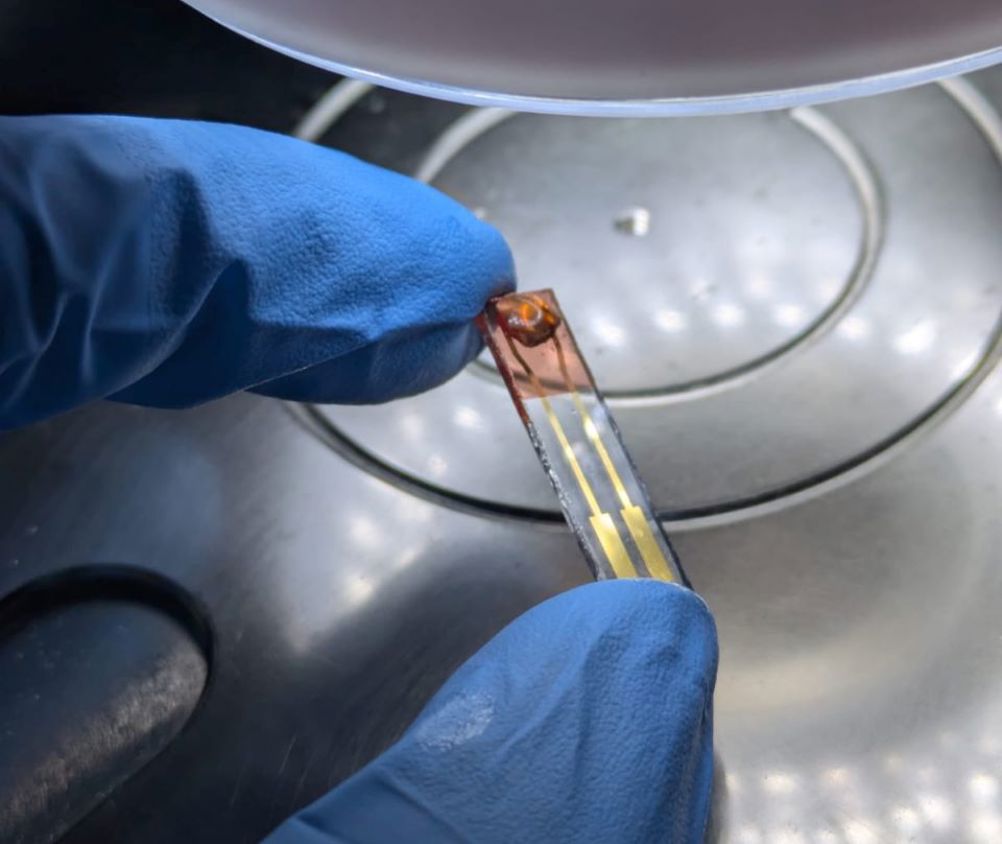Engineers from Glasgow University partnered with researchers from São Paulo State University (UNESP) and Hong Kong Metropolitan University to develop the system, which uses organic, biodegradable and recyclable parts to ‘see’ and ‘remember’ colours while drawing a small amount of power.
Their non-volatile Electrolyte-Gated Organic Field-Effect Transistor (EGOFET) system combines light sensing light, information processing, and memory storage in a single unit capable of mimicking the human visual system.
In the future, this could make it particularly efficient for real-world applications where fast processing of visual information is required, like autonomous aerial vehicles or smart security systems.

The team’s EGOFET is claimed to improve on some aspects of the performance of previous attempts to build artificial vision systems using silicon-based CMOS sensors, which require significant computing and energy resources.
In a statement, project lead Theodoros Serghiou of Glasgow University’s James Watt School of Engineering, said: "In conventional computing, there's an inherent latency from having to fetch and transfer data in CMOS-based systems due to the physical separation between the processing and memory units.
“Our new memory-based device, however, performs these functions simultaneously in-memory, similar to how synapses in the human brain work, helping to overcome the bottlenecks of conventional systems.
“Our device’s ultra-low power consumption and sustainable materials could pave the way for eco-friendly, scalable artificial vision systems in the years to come.”
In a paper published in Advanced Functional Materials, the team describes how they built their prototype EGOFET on a glass substrate using gold electrodes, a layer of organic, photosensitive perylene, and a layer of honey as the electrolyte.
According to the paper, honey as an electrolyte provides a simpler processing route compared to conventional electrolytes, which often require multiple preparation steps in a controlled, cleanroom environment. Honey is bio-derived, biodegradable, and abundant, making it a sustainable alternative to manufactured electrolytes.
The system acts as a photodetector, producing ‘spikes’ of current which vary in response to different wavelengths and intensities of light, allowing the programming of memory states which can be remembered by the system.
The EGOFET is said to achieve some of the highest performances measured to date, requiring 2.4 picojoules of energy per spiking event, making it one of the most energy-efficient devices of its kind. Conventional CMOS imaging systems often require millions of times more power due to their clock-driven response.
Corresponding author Professor Jeff Kettle said: “Our device is able to emulate key synaptic behaviours such as short-term and long-term plasticity, spike-time dependent plasticity and paired-pulse facilitation with high fidelity.
“The implications of this research…extend beyond artificial vision to broader applications in sustainable neuromorphic computing, image processing and energy-efficient bio-inspired electronics.
“We plan to scale this single-device prototype into arrays for enhanced image recognition capabilities, which could provide enhanced performance for artificial vision systems before being more sustainably disposed of at the end of their lifecycle.”
Once the device’s useful lifespan is complete, the team believes that the glass and gold elements could be recycled and reused, while the organic elements could be left to biodegrade.
The research was supported by funding from the UKRI Responsible Electronics and Circular Technology Centre (REACT) and the Engineering and Physical Sciences Research Council, plus the São Paulo Research Foundation (FAPESP) in Brazil.











Deep Heat: The new technologies taking geothermal energy to the next level
No. Not in the UK. The one location in the UK, with the prospect of delivering heat at around 150°C and a thermal-to-electrical efficiency of 10-12%,...